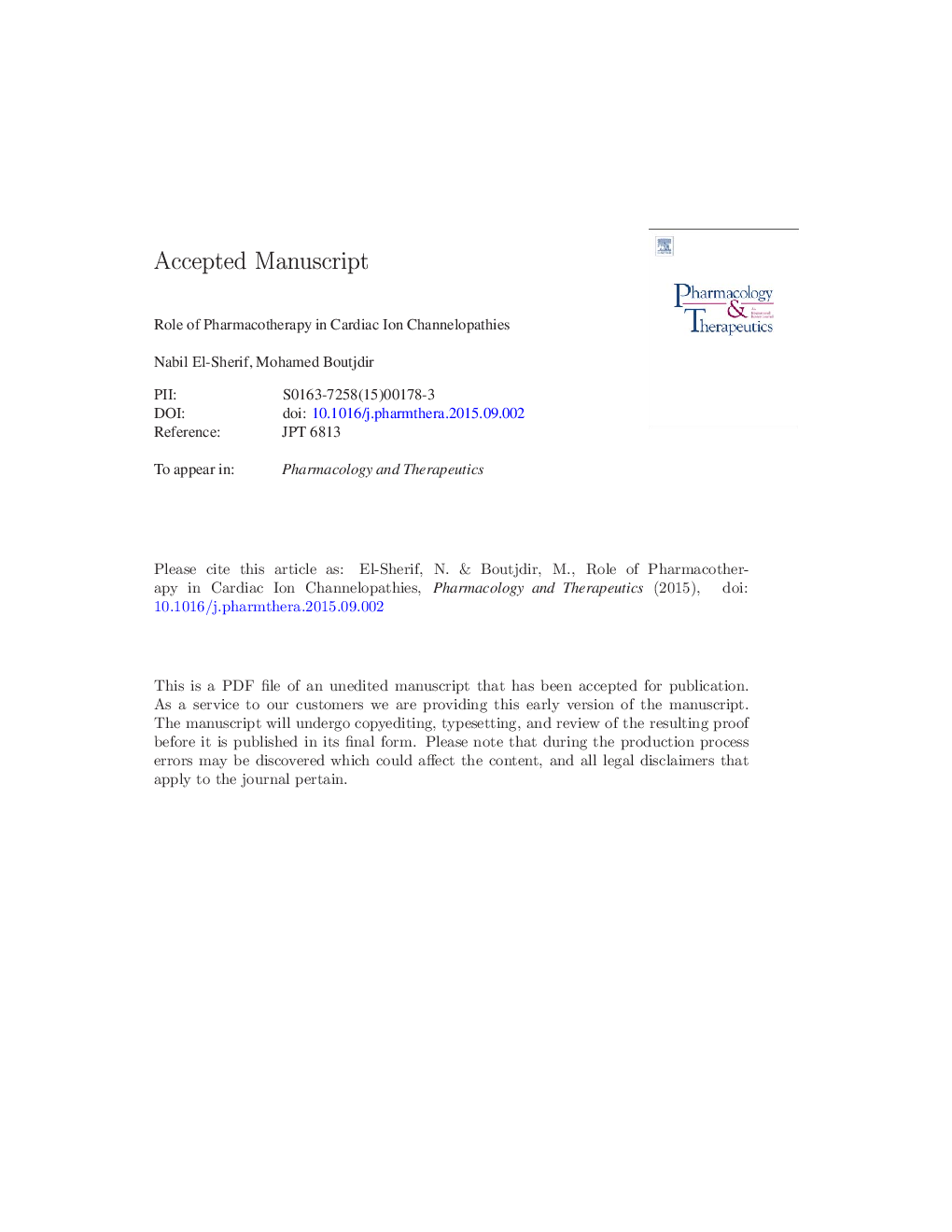| کد مقاله | کد نشریه | سال انتشار | مقاله انگلیسی | نسخه تمام متن |
|---|---|---|---|---|
| 5843914 | 1127478 | 2015 | 55 صفحه PDF | دانلود رایگان |
عنوان انگلیسی مقاله ISI
Role of pharmacotherapy in cardiac ion channelopathies
ترجمه فارسی عنوان
نقش داروسازی در کانالوپاتیهای یون قلب
دانلود مقاله + سفارش ترجمه
دانلود مقاله ISI انگلیسی
رایگان برای ایرانیان
کلمات کلیدی
BRSCPVTAPDLQTSATSTDPTorsade de pointesHERGChannelopathiesSCDAP-ASQTSICAImplantable cardioverter defibrillator - Defibrillator کاردیوبرتر ImplantableINa - INAelectrocardiogram - الکتروکاردیوگرام یا نوار قلبECG - الکتروکاردیوگرام یا نوار قلبITO - اینVentricular tachyarrhythmias - تاکیآریتمی های بطنیCatecholaminergic polymorphic ventricular tachycardia - تاکیکاردی بطنی پلی مورفید CatecholaminergicTransient outward current - جریان مداوم بیرونICD - دفیبریلاتورهای کاردیوورتر کاشتنیLong QT syndrome - سندرم QT طولانیshort QT syndrome - سندرم QT کوتاهBrugada syndrome - سندرم بروگاداVentricular fibrillation - فیبریلاسیون بطنیAction potential duration - مدت زمان بالقوه عملSudden cardiac death - مرگ ناگهانی قلبیhuman ether-à-go-go-related gene - ژن وابسته به اتر-أ-go-go انسان استSodium Channel - کانال سدیمCalcium channel - کانال کلسیم
موضوعات مرتبط
علوم پزشکی و سلامت
داروسازی، سم شناسی و علوم دارویی
داروشناسی
چکیده انگلیسی
In the last decade, there have been considerable advances in the understanding of the pathophysiology of malignant ventricular tachyarrhythmias (VT) and sudden cardiac death (SCD). Over 80% of SCD occurs in patients with organic heart disease. However, approximately 10%-15% of SCD occurs in the presence of structurally normal heart, and the majority of these patients are young. In this group of patients, changes in genes encoding cardiac ion channels produce modifications of the function of the channel resulting in an electrophysiological substrate of VT and SCD. Collectively, these disorders are referred to as cardiac ion channelopathies. The four major syndromes in this group are: the long QT syndrome (LQTS), the Brugada syndrome (BrS), the short QT syndrome (SQTS), and the catecholaminergic polymorphic ventricular tachycardia (CPVT). Each of these syndromes includes multiple subtypes with different and sometimes complex cardiac ion channel genetic abnormalities. Many are associated with other somatic and neurological abnormalities besides the risk of VT and SCD. The current management of cardiac ion channelopathies can be summarized as follows: (1) in symptomatic patients, the implantable cardioverter defibrillator (ICD) is the only viable option; (2) in asymptomatic patients, risk stratification is necessary, followed by either the ICD, pharmacotherapy, or a combination of both. A genotype-specific approach to pharmacotherapy requires a thorough understanding of the molecular-cellular basis of arrhythmogenesis in cardiac ion channelopathies as well as the specific drug profile.
ناشر
Database: Elsevier - ScienceDirect (ساینس دایرکت)
Journal: Pharmacology & Therapeutics - Volume 155, November 2015, Pages 132-142
Journal: Pharmacology & Therapeutics - Volume 155, November 2015, Pages 132-142
نویسندگان
Nabil El-Sherif, Mohamed Boutjdir,
